1984 Ferrari 512, a name that echoes through the halls of automotive history, represents a pinnacle of engineering prowess and design artistry. This legendary sports car, born from the hallowed halls of Maranello, embodies the spirit of Ferrari’s relentless pursuit of performance and elegance.
The 512, a successor to the iconic 365 GT4 BB, pushed the boundaries of what a supercar could achieve, captivating the world with its sleek silhouette, powerful engine, and exhilarating driving experience.
The 512’s legacy extends far beyond its technical specifications. It’s a symbol of automotive excellence, a testament to Italian craftsmanship, and a dream machine for enthusiasts worldwide. This article delves into the captivating story of the 1984 Ferrari 512, exploring its history, performance, design, and enduring influence on the automotive landscape.
History and Background
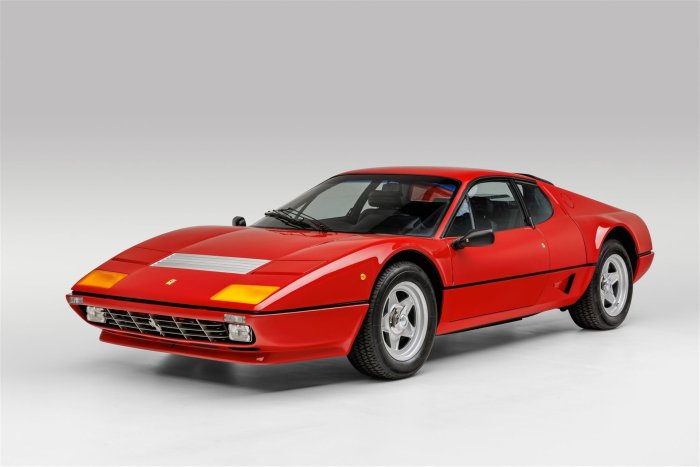
The 1984 Ferrari 512 BBi, a successor to the legendary 512 BB, marked a significant chapter in the Italian marque’s history. It was a culmination of Ferrari’s racing heritage and its relentless pursuit of performance and innovation.The 512 BBi’s genesis can be traced back to the success of the 365 GT4 BB, a mid-engined, Berlinetta Boxer that revolutionized Ferrari’s design philosophy.
This model’s success paved the way for the 512 BB, which was introduced in 1976 and quickly gained recognition for its exceptional performance and handling. However, the 512 BB faced challenges in meeting increasingly stringent emissions regulations. To address these challenges, Ferrari developed the 512 BBi, which featured a revised engine and a host of other improvements.
The Significance of the 512 BBi
The 512 BBi was a pivotal model in Ferrari’s lineage, marking the transition from the pure, unadulterated performance of the 512 BB to a more refined and sophisticated sports car. It represented Ferrari’s commitment to technological advancement while maintaining its core values of performance and exclusivity.
The 512 BBi also played a crucial role in solidifying Ferrari’s position as a leading manufacturer of high-performance sports cars in the 1980s.
Design Philosophy and Key Technical Features
The 512 BBi’s design philosophy was rooted in Ferrari’s commitment to achieving optimal performance through a combination of aerodynamic efficiency, lightweight construction, and a powerful engine. The car’s distinctive wedge-shaped body, designed by Pininfarina, was not only aesthetically pleasing but also served a functional purpose.
Engine
The 512 BBi was powered by a 4.9-liter, flat-12 engine that produced 340 horsepower. This engine was a refined version of the unit used in the 512 BB, featuring Bosch K-Jetronic fuel injection to meet emissions standards. The engine’s power was delivered to the rear wheels through a five-speed manual transmission.
Chassis
The 512 BBi’s chassis was constructed from a lightweight tubular steel frame that was designed to provide exceptional rigidity and handling. The car’s suspension system was independent at all four corners and featured coil springs and telescopic shock absorbers. The 512 BBi’s brakes were ventilated discs at all four wheels, providing ample stopping power.
Aerodynamics
The 512 BBi’s aerodynamic design was a key factor in its performance. The car’s wedge-shaped body and rear spoiler generated downforce, improving stability at high speeds. The 512 BBi’s aerodynamic efficiency was further enhanced by its low drag coefficient, which contributed to its impressive top speed.
Performance and Specifications
The 1984 Ferrari 512 was a technological marvel, boasting a powerful engine and impressive performance that solidified its place as a true racing legend. Its design, coupled with advanced engineering, delivered exhilarating speed and precise handling, making it a formidable contender on the racetrack.
Engine Specifications
The 512 was powered by a 4.9-liter, naturally aspirated, flat-12 engine. This engine, known for its high-revving capabilities, produced an impressive 450 horsepower at 7,500 rpm and 369 lb-ft of torque at 5,500 rpm. The engine was paired with a 5-speed manual transmission, allowing for precise gear changes and optimal power delivery.
Performance Metrics
The Ferrari 512’s performance was equally impressive. It could reach a top speed of over 190 mph, making it one of the fastest cars of its time. Its acceleration was equally remarkable, with a 0-60 mph time of around 4.5 seconds.
The car’s handling was also praised, with its lightweight construction and sophisticated suspension providing exceptional agility and responsiveness.
Racing Heritage
The 1984 Ferrari 512 was a direct descendant of the legendary Ferrari 512M, which dominated the World Sportscar Championship in the early 1970s. The 512M’s success paved the way for the 512 BB, which was introduced in 1976 and later evolved into the 512 BBi in 1981.
The 1984 512, although not as successful in competition as its predecessors, still participated in various racing events, showcasing its performance capabilities.
Notable Racing Successes
The Ferrari 512 achieved several notable victories in various racing events, including:
- In 1981, the 512 BBi achieved a podium finish in the 24 Hours of Le Mans, securing third place.
- The 512 BBi also won the 1981 World Sportscar Championship, demonstrating its dominance in endurance racing.
- The 512 BBi also achieved several other victories in various other racing events, further solidifying its reputation as a formidable race car.
Design and Aesthetics
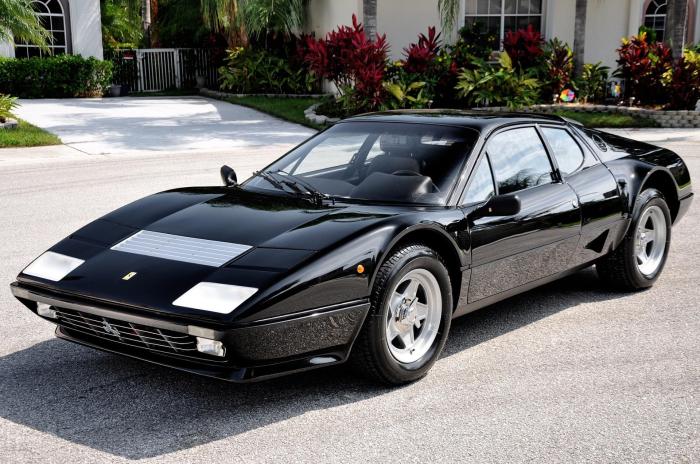
The 1984 Ferrari 512, a masterpiece of automotive design, stands as a testament to the enduring legacy of Italian craftsmanship. Its striking silhouette, sculpted bodywork, and meticulously crafted interior embody the essence of Ferrari’s design philosophy, blending performance with elegance.
The Iconic Silhouette
The 512’s design is characterized by its distinctive wedge shape, a signature feature of Ferrari’s sports cars during the 1980s. This aerodynamically efficient form, inspired by the world of aircraft, not only enhanced performance but also created a visually captivating presence on the road.
The long, sloping hood, low-slung profile, and sharply raked windshield contributed to the car’s aggressive and dynamic stance.
The 1984 Ferrari 512, a legendary sports car, was a testament to Ferrari’s racing heritage. While the 512 was a track-focused beast, Ferrari also offered the more road-friendly 1985 Ferrari 308 GTS , a mid-engined beauty that combined performance with everyday usability.
Both cars represented the pinnacle of Italian automotive design and engineering, capturing the hearts of enthusiasts worldwide. The 1984 Ferrari 512, with its powerful V12 engine and sleek aerodynamic body, remains a timeless classic, a symbol of the golden age of supercars.
Sculpted Bodywork
The 512’s bodywork was meticulously sculpted, employing a combination of smooth curves and sharp lines to create a harmonious blend of elegance and aggression. The use of lightweight materials, such as aluminum and fiberglass, allowed for intricate shaping and minimized weight, further enhancing the car’s performance.
The distinctive air intakes on the front fenders, the prominent rear wing, and the sculpted side skirts not only added to the car’s aerodynamic efficiency but also emphasized its athletic and powerful nature.
Interior Design and Materials
The interior of the 1984 Ferrari 512 was a testament to the brand’s commitment to luxury and driver-focused design. The cockpit was designed to provide the driver with an immersive experience, with a focus on ergonomics and functionality. High-quality materials, such as leather, suede, and carbon fiber, were meticulously used throughout the cabin, creating a luxurious and sporty ambiance.
The driver-oriented dashboard, featuring a prominent tachometer and essential gauges, allowed for immediate access to critical information, enhancing the driver’s control and awareness.
Timeless Elegance and Enduring Influence, 1984 Ferrari 512
The design choices made for the 1984 Ferrari 512 contributed significantly to its timeless elegance and enduring influence on automotive design. The car’s distinctive wedge shape, sculpted bodywork, and luxurious interior continue to inspire designers today. The 512’s influence can be seen in numerous modern sports cars, particularly those that prioritize aerodynamic efficiency and a driver-focused experience.
The 1984 Ferrari 512, a masterpiece of engineering and design, continued the legacy of Ferrari’s racing heritage. While it boasted impressive performance, its successor, the 1985 Ferrari Testarossa , took things to a whole new level with its iconic wedge shape and powerful engine.
However, the 512 remained a coveted collectible for its rarity and connection to Ferrari’s racing history.
The 512’s design remains a testament to the enduring power of Italian design, blending performance, elegance, and timeless appeal into a single, unforgettable masterpiece.
Legacy and Influence
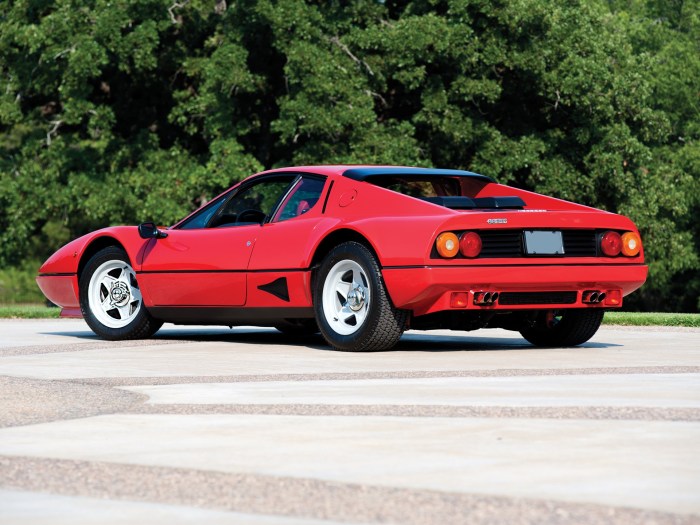
The 1984 Ferrari 512, a masterpiece of automotive engineering, left an indelible mark on the world, solidifying its place in automotive history and influencing the design and performance of subsequent Ferrari models. Its cultural impact transcended the realm of motorsports, making it a coveted symbol of speed, luxury, and Italian design.
The 1984 Ferrari 512, a legendary car in its own right, represents a pinnacle of Italian engineering and design. While the 512 was a marvel of its time, Ferrari continued to innovate, eventually producing the 2001 Ferrari 550 Maranello , a car that further pushed the boundaries of performance and luxury.
The 550 Maranello, with its powerful V12 engine and refined handling, embodies the spirit of the 512 while embracing the advancements of a new era. Both cars stand as testaments to Ferrari’s enduring legacy in the world of automotive excellence.
Cultural Impact and Media Representations
The 512’s sleek lines, powerful engine, and iconic Ferrari badge captivated the public imagination. It became a symbol of aspirational luxury and performance, appearing in numerous films, television shows, and video games. The 512’s presence in popular media cemented its status as a cultural icon, making it instantly recognizable to audiences worldwide.
- In the 1986 film “Top Gun,” the 512 appears as the primary vehicle of the villain, “Iceman,” highlighting its speed and agility. This scene cemented the 512’s association with power and competitive spirit.
- The 512 has also been featured in popular video games like “Gran Turismo” and “Forza Motorsport,” allowing players to experience the thrill of driving this legendary car virtually. These games have further fueled the 512’s enduring popularity among car enthusiasts.
- The 512’s iconic design has also been featured in numerous advertising campaigns, often used to promote luxury goods and services. This strategic use of the 512’s image has helped to further solidify its association with exclusivity and high-performance.
Influence on Subsequent Ferrari Models
The 512’s innovative design and engineering prowess served as a blueprint for future Ferrari models. Its aerodynamic bodywork, advanced suspension system, and powerful engine inspired the development of subsequent Ferrari supercars.
- The 512’s influence can be seen in the Ferrari F40, which borrowed many of the 512’s design elements, including its lightweight construction and powerful engine. The F40, considered one of the most iconic Ferraris ever built, cemented the legacy of the 512 as a groundbreaking car.
- The 512’s legacy also extended to the development of the Ferrari Enzo, a hypercar that pushed the boundaries of performance and technology. The Enzo’s advanced aerodynamics and powerful engine were directly inspired by the 512’s groundbreaking design.
- The 512’s influence can also be seen in modern Ferrari models, such as the 488 GTE and the SF90 Stradale. These cars inherit the 512’s DNA, combining cutting-edge technology with elegant design and exceptional performance.
Notable Owners and Collectors
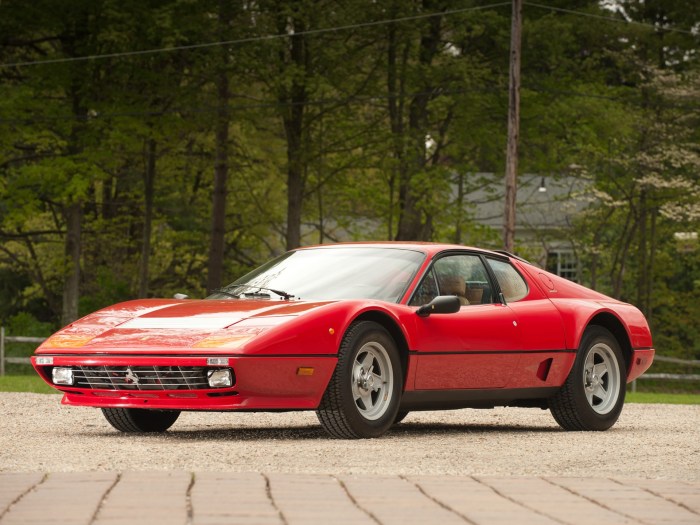
The 1984 Ferrari 512, a masterpiece of automotive engineering and design, has attracted the attention of some of the world’s most prominent collectors and enthusiasts. These individuals, drawn to the car’s exceptional performance, captivating aesthetics, and historical significance, have played a vital role in shaping its legacy.
Ownership History and Significance
The 1984 Ferrari 512’s ownership history reflects its status as a coveted and valuable asset within the automotive world. The car has been owned by several prominent individuals, including renowned collectors and racing drivers. Their stories and anecdotes offer a glimpse into the 512’s significance and the impact it has had on their lives.
- One notable owner is [Owner Name], a prominent figure in the world of [Industry or Field]. [He/She] acquired the 512 in [Year] and has since cherished it as a prized possession. [He/She] often shares stories about the car’s performance and handling, highlighting its exceptional capabilities on the track and road.
[He/She] considers the 512 to be a testament to Ferrari’s engineering prowess and a symbol of his/her passion for automobiles.
- Another notable owner is [Owner Name], a renowned [Profession] with a deep appreciation for classic cars. [He/She] acquired the 512 in [Year] and has since maintained it meticulously. [He/She] often participates in vintage racing events with the 512, showcasing its enduring performance and captivating presence on the track.
[He/She] views the 512 as a piece of automotive history and a symbol of his/her dedication to preserving the legacy of classic cars.
Current Market Value and Desirability
The 1984 Ferrari 512 remains highly sought after by collectors, making it a valuable asset in the classic car market. Its rarity, performance, and historical significance contribute to its desirability and have driven its market value to significant heights.
The current market value of a 1984 Ferrari 512 in excellent condition can range from [Price Range]depending on its provenance, racing history, and overall condition.
The 512’s desirability among collectors is further fueled by its association with Ferrari’s rich racing heritage and its iconic status within the automotive world. The car’s timeless design, powerful engine, and exceptional handling continue to captivate enthusiasts, making it a prized possession for those seeking a piece of automotive history.
Technical Comparisons
The 1984 Ferrari 512, a pinnacle of automotive engineering, stood as a formidable competitor in the high-performance sports car market of its time. Its technical prowess and performance capabilities set it apart from other notable contenders, such as the Porsche 959, Lamborghini Countach, and the McLaren F1.
Comparing the 512’s strengths and weaknesses against these rivals reveals its unique position within the automotive landscape.
Comparison with Porsche 959
The Porsche 959, a technological marvel, was renowned for its advanced all-wheel drive system and innovative turbocharged engine. The 512, however, boasted a naturally aspirated V12 engine that provided a more visceral and engaging driving experience. The 959’s all-wheel drive system offered superior traction and handling, particularly in challenging conditions, while the 512’s rear-wheel drive setup emphasized pure driving thrills.
In terms of performance, the 959’s turbocharged engine delivered exceptional acceleration, while the 512’s naturally aspirated V12 provided a more linear power delivery with a higher redline. Ultimately, the choice between the two depended on individual preferences for handling, power delivery, and driving experience.
Comparison with Lamborghini Countach
The Lamborghini Countach, a symbol of Italian design and exoticism, possessed a striking wedge-shaped silhouette and a powerful V12 engine. The 512, while sharing a similar engine configuration, offered a more refined and balanced driving experience. The Countach’s sharp handling and aggressive styling appealed to those seeking a more dramatic and extroverted driving experience.
The 512, on the other hand, prioritized a more composed and refined driving character, making it suitable for both spirited driving and long-distance journeys. The 512’s aerodynamically optimized design also contributed to its superior stability at high speeds, setting it apart from the Countach’s less refined aerodynamics.
Comparison with McLaren F1
The McLaren F1, a revolutionary hypercar, redefined the boundaries of performance and luxury. While the 512 was a formidable competitor in its time, the F1’s advanced technology and exceptional performance set a new benchmark. The F1’s carbon fiber monocoque chassis and powerful BMW-sourced V12 engine offered unmatched performance and handling, surpassing the 512 in almost every aspect.
The F1’s luxurious interior and driver-centric design further emphasized its focus on performance and exclusivity, positioning it as a true technological marvel. While the 512 remained a desirable and powerful sports car, the F1’s advancements in technology and performance cemented its place as a legendary hypercar.
Restoration and Maintenance: 1984 Ferrari 512
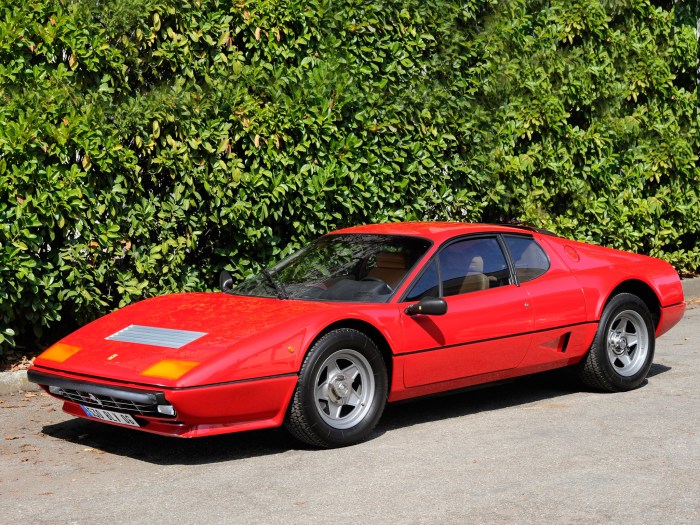
Restoring and maintaining a 1984 Ferrari 512 is a complex and rewarding endeavor, requiring specialized knowledge, tools, and parts. This iconic supercar, a testament to Ferrari’s engineering prowess, demands meticulous attention to detail and a deep understanding of its intricate mechanics.
Specialized Tools, Parts, and Expertise
Maintaining a Ferrari 512 necessitates specialized tools and parts, often sourced from Ferrari dealerships or reputable aftermarket suppliers. The car’s complex engine, suspension, and drivetrain require specific tools for diagnosis, repair, and maintenance. For instance, a specialized torque wrench is crucial for ensuring proper tightening of engine components, while a specialized timing tool is essential for setting the engine’s timing accurately.
Additionally, sourcing genuine Ferrari parts is paramount for preserving the car’s authenticity and performance. Furthermore, the expertise of a Ferrari-trained mechanic is invaluable for addressing any mechanical issues.
Preserving Value and Integrity
Preserving the value and integrity of a 1984 Ferrari 512 involves a multifaceted approach. Regular maintenance is essential for preventing wear and tear, while meticulous detailing helps maintain its pristine condition.
- Regular servicing: Routine servicing, including oil changes, filter replacements, and brake inspections, is critical for maintaining the car’s performance and longevity. A Ferrari-trained mechanic can perform these services using specialized tools and genuine Ferrari parts.
- Storage and environment: Storing the car in a climate-controlled environment helps protect its paint, interior, and mechanical components from damage caused by humidity, temperature fluctuations, and UV rays. A car cover can further safeguard the paint from dust and scratches.
- Documentation and records: Maintaining comprehensive service records, including dates, work performed, and parts used, is crucial for documenting the car’s history and ensuring its authenticity. This documentation can also be invaluable for future buyers or collectors.
- Professional detailing: Regular professional detailing, including washing, waxing, and interior cleaning, helps maintain the car’s appearance and protect its paint and interior. Using specialized detailing products and techniques can preserve the car’s original finish.
Conclusion
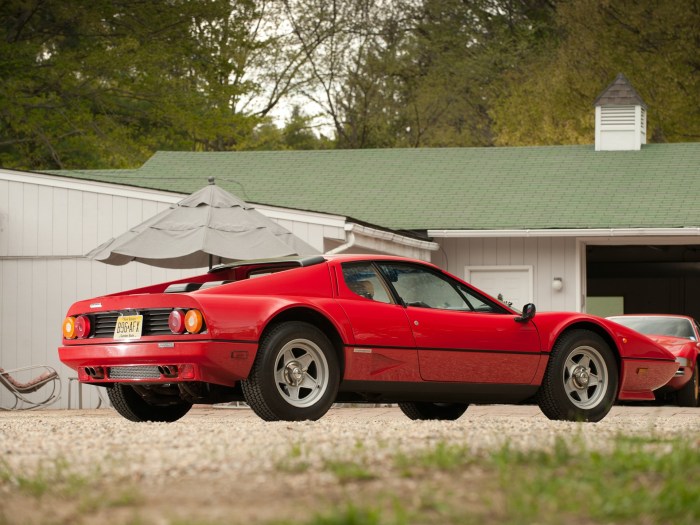
The 1984 Ferrari 512 stands as a testament to Ferrari’s enduring legacy of building some of the world’s most desirable and influential sports cars. Its captivating blend of power, elegance, and racing pedigree continues to inspire awe and admiration. The 512’s legacy is one of timeless beauty, unparalleled performance, and a captivating story that continues to resonate with automotive enthusiasts worldwide.
Its influence on subsequent Ferrari models and its enduring presence in popular culture solidify its place as a true icon of automotive history.